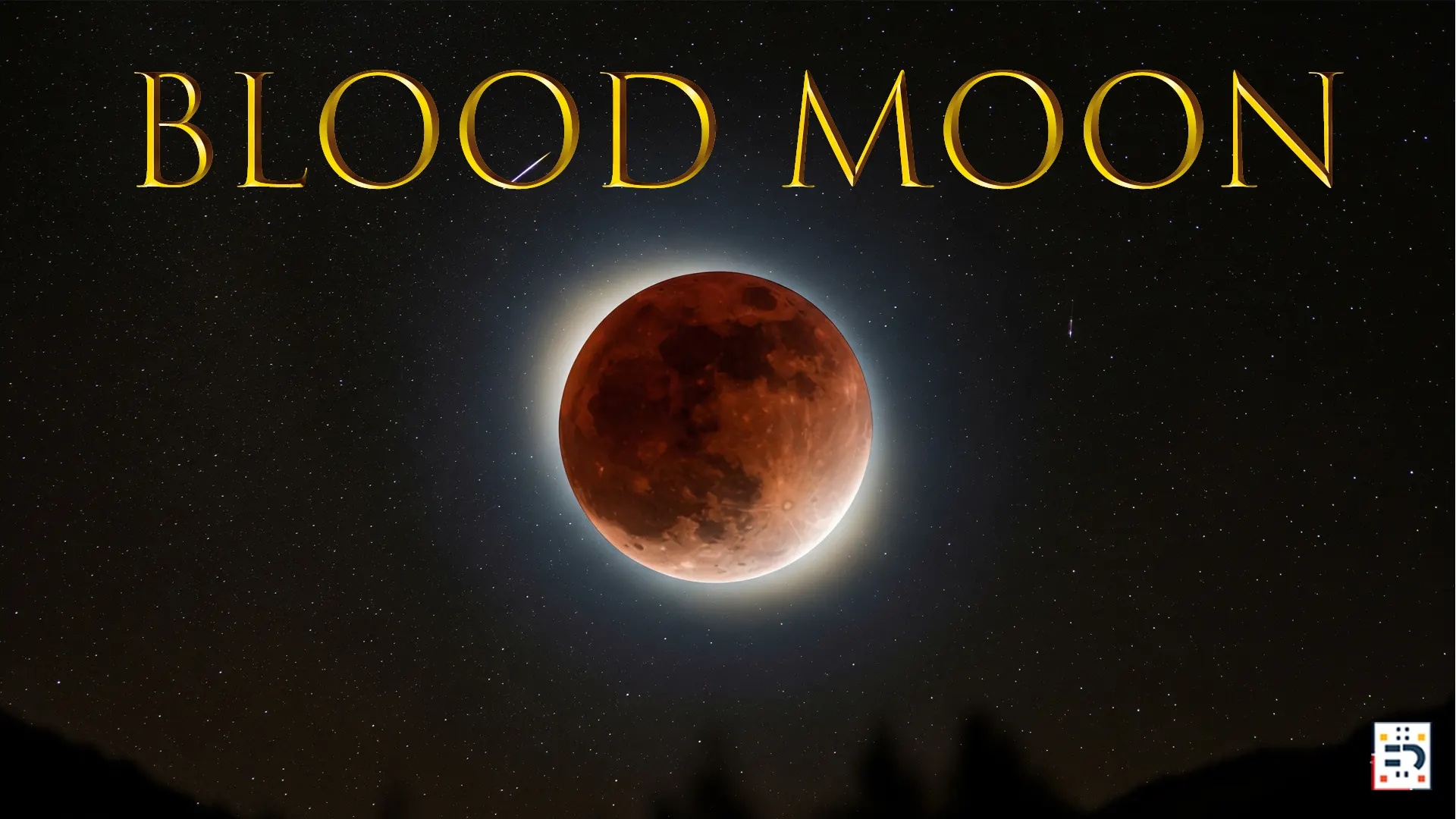What is a Blood Moon? Understanding America’s Next Celestial Spectacle
A blood moon is the spectacular result of a total lunar eclipse, when Earth’s shadow completely covers the moon, transforming it into a dramatic reddish-copper orb. This natural phenomenon gets its striking name from the deep red color that appears during totality, caused by Earth’s atmosphere bending and filtering sunlight.
For astronomy enthusiasts in the United States, blood moons represent some of the most accessible and awe-inspiring celestial events. According to NASA’s eclipse safety guidelines, lunar eclipses are completely safe to view with the naked eye throughout all phases, making them perfect for families and amateur astronomers across America.
The distinctive red coloration occurs through the same atmospheric effect that creates beautiful sunrises and sunsets. As sunlight passes through Earth’s atmosphere during the eclipse, blue light waves scatter away while red wavelengths bend around our planet and illuminate the moon’s surface.
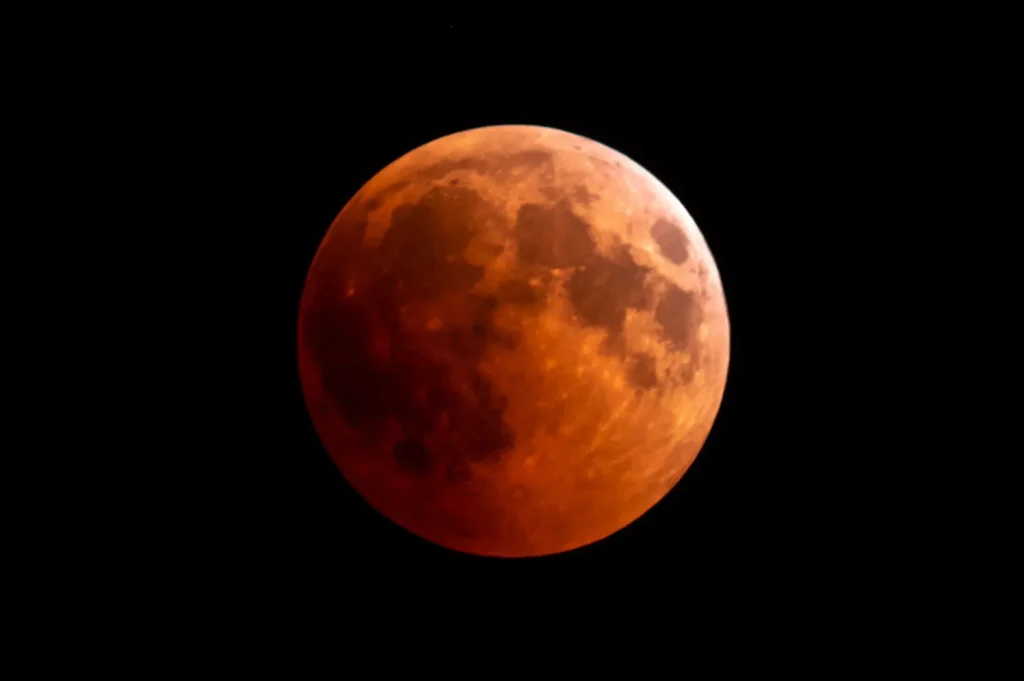
Blood Moon 2026 USA: When and Where Americans Can See the Next Eclipse
Key Dates for US Skywatchers
After missing the spectacular September 2025 blood moon that wasn’t visible from North America, Americans only have to wait 177 days for the next opportunity. The next blood moon visible from the United States occurs on March 2-3, 2026, marking the return of total lunar eclipse visibility to American skies.
Visibility Across America
The March 2-3, 2026 total lunar eclipse will be visible from various parts of North America, offering millions of Americans the chance to witness this celestial spectacle. The eclipse timing will favor different regions of the United States, with specific viewing windows varying by time zone.
Best Viewing States Include:
- Eastern United States: Prime viewing during early morning hours
- Central United States: Excellent visibility during pre-dawn period
- Western United States: May catch partial phases before moonset
- Alaska and Hawaii: Unique viewing opportunities based on geographic position
Exact Timing for US Time Zones
The March 2026 blood moon will unfold over several hours, with different phases visible at varying times across American time zones:
Eastern Time Zone (EST):
- Partial eclipse begins: Early morning hours
- Totality phase: Pre-dawn period
- Maximum eclipse: Before sunrise
Central Time Zone (CST):
- Enhanced visibility window during optimal viewing hours
- Totality visible during dark sky conditions
Mountain and Pacific Time Zones:
- Eclipse phases may compete with moonset
- Western observers should prepare for early morning viewing
Note: Precise timing details will be updated as the eclipse approaches
Recent Blood Moon News: What Americans Missed in September 2025
September 2025: A Spectacular Eclipse Outside US Visibility
The September 7-8, 2025 total lunar eclipse delivered a spectacular blood-red moon that captivated observers worldwide. Unfortunately, this event occurred during daylight hours across the United States, meaning American skywatchers missed this year’s second total lunar eclipse.
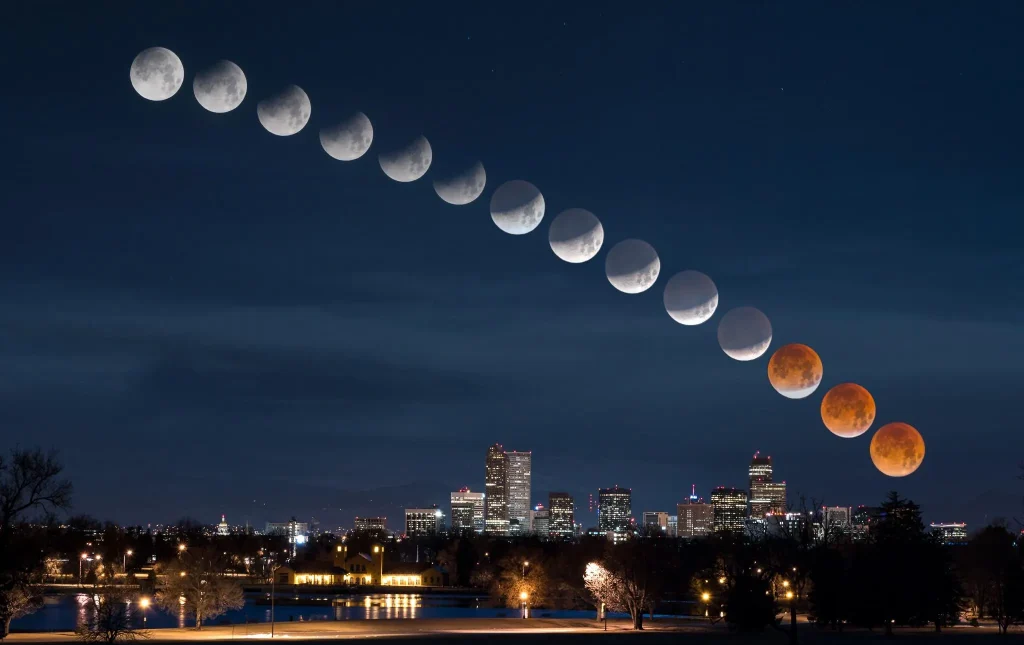
Asia had the best viewing opportunities for the September eclipse, while European countries also enjoyed excellent views. The eclipse was widely photographed and live-streamed, allowing Americans to experience the event virtually while anticipating their own viewing opportunity in 2026.
Why the Wait is Worth It for US Observers
Total lunar eclipses are relatively rare astronomical events—from any given location on Earth, you can only see one about once every 2.5 years. This rarity makes the upcoming March 2026 blood moon particularly special for American astronomy enthusiasts.
Complete Blood Moon Viewing Guide for Americans
No Special Equipment Required
One of the most appealing aspects of blood moon viewing in the USA is accessibility. Unlike solar eclipses that require special safety equipment, lunar eclipses are completely safe to observe with the naked eye throughout all phases. This makes blood moons perfect for:
- Family astronomy nights
- School educational programs
- Community stargazing events
- Solo contemplative viewing
Best Viewing Locations Across America
Urban Areas: While light pollution affects faint astronomical objects, blood moons remain visible from cities nationwide. Major metropolitan areas like New York, Los Angeles, Chicago, and Houston will offer viewing opportunities.
Suburban Locations: Ideal balance of accessibility and sky darkness for enhanced eclipse photography and observation.
Rural America: Dark sky locations provide the most dramatic blood moon experience, with enhanced color saturation and surrounding star visibility.
National Parks: America’s national parks offer some of the world’s best astronomical viewing conditions, making them premier blood moon destinations.
State-by-State Viewing Recommendations
California: Coastal and mountain locations offer diverse viewing experiences
Texas: Wide open skies provide excellent eclipse visibility
Florida: Minimal light pollution in rural areas enhances viewing
New York: Urban and upstate locations both viable for eclipse observation
Colorado: High altitude locations offer crystal-clear atmospheric conditions
Photography Tips for the 2026 Blood Moon USA
Camera Settings for American Photographers
- ISO: 400-1600 depending on eclipse phase
- Aperture: f/5.6 to f/8 for optimal sharpness
- Shutter Speed: 1-4 seconds during totality
- Focus: Manual focus set to infinity
Smartphone Photography:
- Use night mode if available
- Stabilize with tripod or steady surface
- Consider telephoto lens attachments
- Shoot in RAW format when possible
Creating Compelling American Landscape Compositions
Incorporate iconic American landmarks into your blood moon photography:
- National monuments silhouetted against the eclipsed moon
- City skylines providing dramatic foreground elements
- Natural landscapes showcasing America’s diverse geography
- Historical buildings creating timeless compositional elements
Social Media and Sharing
Document your blood moon 2026 USA experience for social media:
- Use hashtags: #BloodMoon2026USA #LunarEclipseAmerica #AstronomyUSA
- Tag location for local astronomy communities
- Share viewing tips with fellow Americans
- Create time-lapse sequences showing eclipse progression
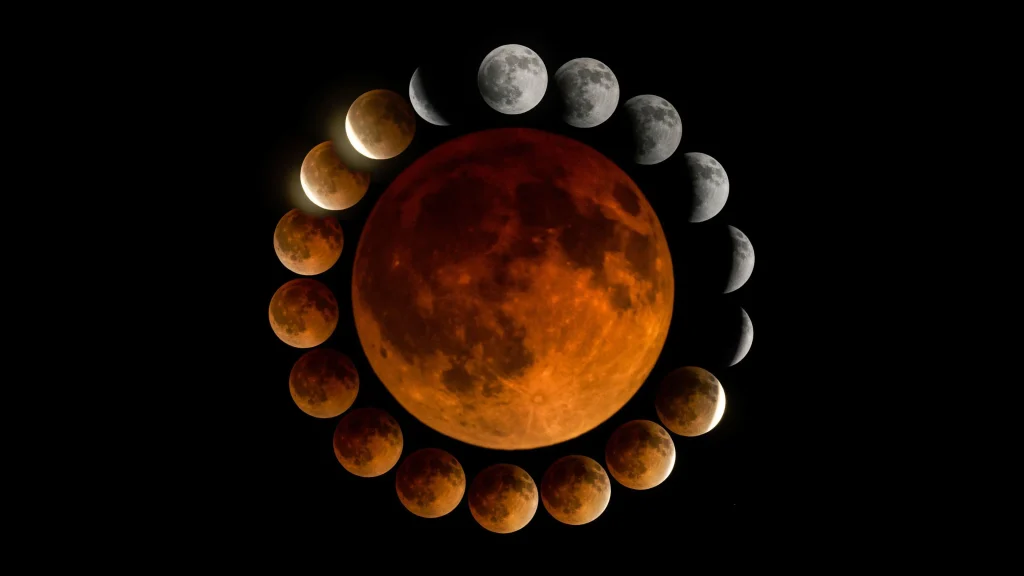
Scientific Significance and Educational Value
NASA and American Astronomy Research
American astronomical institutions, including NASA, actively study lunar eclipses for various research purposes:
Atmospheric Analysis: Eclipse observations help scientists understand Earth’s atmospheric composition and changes over time
Lunar Surface Research: Blood moon data contributes to understanding lunar thermal properties and surface composition
Educational Outreach: American schools and institutions use eclipses as perfect teaching opportunities for astronomy education
Citizen Science Opportunities for Americans
US residents can contribute valuable scientific data during the 2026 eclipse:
- Timing Observations: Record precise eclipse phase timing
- Color Documentation: Photograph and document eclipse coloration
- Weather Reporting: Submit local atmospheric conditions
- Brightness Measurements: Use simple tools to measure eclipse brightness
Historical Blood Moons in American Culture
Native American Traditions
Indigenous American cultures have long recognized and revered lunar eclipses:
- Various tribes developed sophisticated lunar calendars
- Eclipse observations influenced agricultural and ceremonial timing
- Oral traditions preserved astronomical knowledge across generations
American Astronomical Heritage
The United States has played a crucial role in modern eclipse science:
- 19th Century: American astronomers made significant eclipse discoveries
- Space Age: NASA missions enhanced lunar eclipse understanding
- Modern Era: American amateur astronomers contribute globally to eclipse research
Famous American Eclipse Events
Throughout American history, notable lunar eclipses have marked important cultural moments:
- Colonial era eclipses documented in historical records
- Civil War period eclipses observed by soldiers and civilians
- Modern space age eclipses broadcast nationally
Planning Your Blood Moon 2026 Experience
Travel Considerations for Optimal Viewing
Weather Patterns: March weather varies significantly across America
- Southern States: Generally clearer skies and milder temperatures
- Northern States: Potential for cloud cover and cold conditions
- Western States: Desert locations offer excellent atmospheric clarity
- Coastal Areas: Marine layer may affect visibility
Accommodation Planning: Popular astronomy destinations may experience increased demand
- Book accommodations early in prime viewing areas
- Consider camping options in national parks
- Research local astronomy clubs and organized viewing events
Group Viewing and Community Events
Local Astronomy Clubs: Many American cities host astronomy organizations that organize eclipse viewing events
Museums and Planetariums: Educational institutions often host special eclipse programs
Universities: College astronomy departments frequently organize public viewing sessions
Community Centers: Local organizations may coordinate neighborhood viewing gatherings
Blood Moon vs. Other Lunar Phenomena
Understanding Different Moon Events
Blood Moon (Total Lunar Eclipse): Complete Earth shadow coverage creating red coloration
Partial Lunar Eclipse: Only portion of moon enters Earth’s shadow
Supermoon: Moon appears larger due to closer orbital position
Blue Moon: Second full moon occurring within a single calendar month
Harvest Moon: Full moon nearest to autumn equinox
Why Blood Moons Are Special for Americans
Blood moons offer unique advantages for US observers:
- Visibility Duration: Eclipse phases last several hours
- Safe Observation: No eye protection required unlike solar eclipses
- Photography Opportunities: Extended timing allows for multiple shooting approaches
- Educational Value: Perfect for teaching astronomical concepts
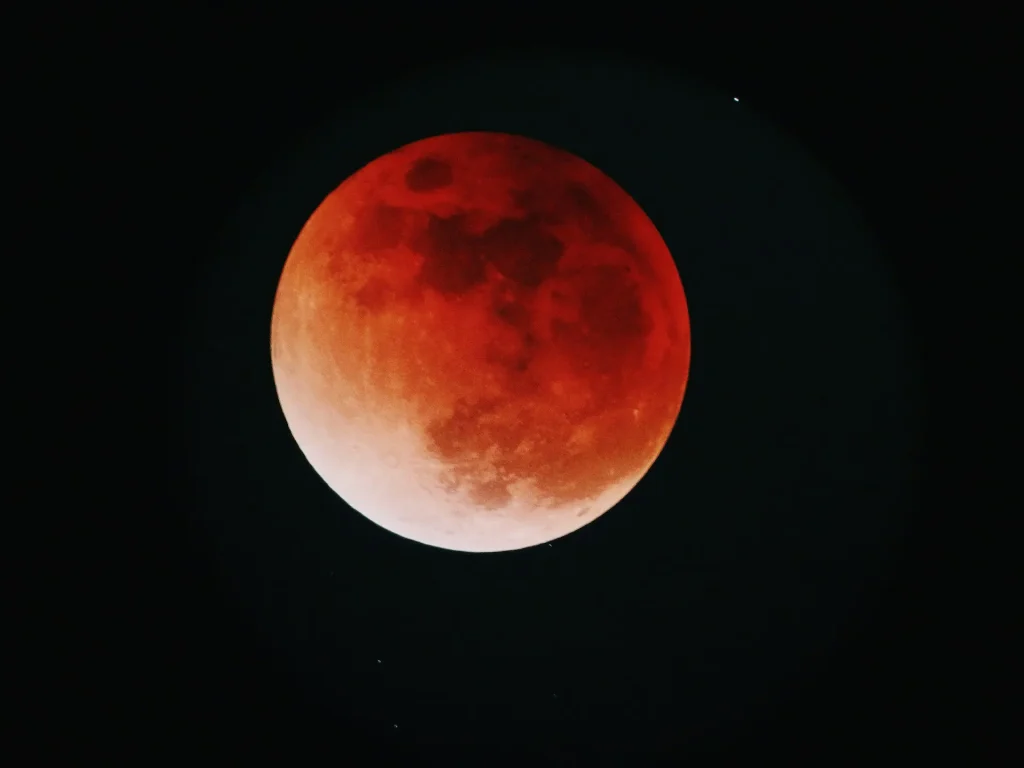
Technology and Apps for Eclipse Tracking
Recommended American Apps and Resources
Astronomy Apps:
- SkySafari: Comprehensive sky mapping with eclipse predictions
- Star Walk 2: User-friendly interface for eclipse timing
- PhotoPills: Essential for eclipse photography planning
- TimeAndDate: Precise local eclipse timing calculations
Weather Apps:
- Clear Outside: Specialized astronomy weather forecasting
- Weather Underground: Detailed local weather predictions
- Dark Sky: Precipitation and cloud cover forecasting
Online Resources for Americans
NASA Eclipse Website: Official US government eclipse information and predictions
American Meteor Society: Community-driven eclipse reporting and data collection
Astronomical League: National organization coordinating amateur astronomy activities
Local Observatory Websites: Regional astronomy organizations providing localized information
Future Eclipse Opportunities After 2026
Long-term Eclipse Calendar for America
While the March 2026 blood moon represents the next major opportunity for Americans, future eclipses will continue providing spectacular viewing opportunities:
Late 2020s: Several partial lunar eclipses visible from various parts of America
2030s: Additional total lunar eclipses with varying visibility across the United States
2040s: Continued eclipse opportunities for future generations of American skywatchers
Building Long-term Astronomy Interest
The 2026 blood moon can serve as a gateway to broader astronomical interests:
- Telescope Purchasing: Eclipse enthusiasm often leads to equipment investment
- Astronomy Club Membership: Community involvement in local astronomical societies
- Educational Pursuits: Inspiring career interests in science and astronomy
- Travel Astronomy: Developing interest in eclipse chasing and astronomical tourism
America’s Date with the Blood Moon
The March 2-3, 2026 blood moon represents a spectacular opportunity for millions of Americans to witness one of nature’s most dramatic celestial displays. After missing the September 2025 eclipse, US residents can anticipate this relatively rare astronomical event that combines scientific wonder with accessible viewing.
Whether you’re an experienced amateur astronomer or someone simply curious about the night sky, the upcoming blood moon visible from America offers perfect introduction to astronomical observation. No special equipment is required, making it ideal for families, students, and anyone interested in connecting with the cosmos.
Start planning now for this remarkable celestial event. Research optimal viewing locations in your area, consider photography equipment if interested in documenting the eclipse, and perhaps connect with local astronomy groups for enhanced viewing experiences. The 2026 blood moon USA promises to create lasting memories and may inspire lifelong interest in astronomy.
Mark your calendars, prepare your viewing plans, and get ready to witness the moon transform into a spectacular blood-red orb visible across American skies. This celestial spectacle connects us with astronomical cycles that have fascinated humanity throughout history, offering a perfect reminder of our place in the vast, dynamic universe.
The countdown to America’s next blood moon has begun – don’t miss this opportunity to witness one of astronomy’s most accessible and awe-inspiring phenomena.
#BloodMoon2025 #LunarEclipse2025 #SeptemberEclipse #TotalLunarEclipse #BloodMoon2026USA #LunarEclipse2026 #TotalLunarEclipse #BloodMoonAmerica #EclipseViewing #AstronomyUSA #StargazingUSA


